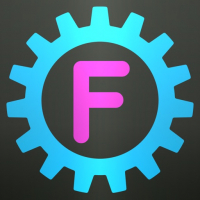Loopy Pro: Create music, your way.
What is Loopy Pro? — Loopy Pro is a powerful, flexible, and intuitive live looper, sampler, clip launcher and DAW for iPhone and iPad. At its core, it allows you to record and layer sounds in real-time to create complex musical arrangements. But it doesn’t stop there—Loopy Pro offers advanced tools to customize your workflow, build dynamic performance setups, and create a seamless connection between instruments, effects, and external gear.
Use it for live looping, sequencing, arranging, mixing, and much more. Whether you're a live performer, a producer, or just experimenting with sound, Loopy Pro helps you take control of your creative process.
Download on the App StoreLoopy Pro is your all-in-one musical toolkit. Try it for free today.




Comments
Maybe it's just me, but it seems like so many of these physically modeled synths sound alike.
That would depend on how you strictly you define "like". If you're not super strict, Strng may be similar in some ways, as would probably any synth that implements the karplus-strong string modeling algorithm. Not sure what "plate modeling" is that Modus has; maybe combine something like Strng with an iOS plate reverb?:
It's that same artificial sounding resonance that I'm really starting to not like about these models. Strings vibrate in far more complex ways, depending on how they're plucked, bowed, scratched, etc.
Sculpture (even better than Modus), Strings, Drambo, Tera Pro, Laplace, Nambu, Lagrange, …
Do you have a link for the iOS app Sculpture?
It's part of the Logic pro for iOS!
E. Sigth's STRNG + spectrum free bundle resonatetheshitoutofiter ?
Of course, as soon as I posted a comment like this, suddenly this Benn Jordan video with an overview of where physical modeling is today appears:
If you'd like to experiment a bit, try doing more with something like Drambo's modal resonator. You can tune its pitch dynamically, change a few model parameters and choose out of quite a palette of physical object models (currently without a string/karplus-strong model but the other models work for demonstrating the principle).
The most interesting part however is, in my opinion, the input signal you're giving it.
If you want it to sound like something that's plucked, bowed or scratched then you'd need to feed it the respective excitation signal.
That's easiest done by using a microphone or contact microphone that picks up the mechanical interaction as good as possible.
Both common approaches are flawed somehow: Sampling is going to end up in huge, storage-hungry instruments when a lot of articulations and fine levels of expressions are aimed at, while physically modelled instruments are often more "organic" but less authentic, very much depending on the quality of the physical model used.
Looking at Yamaha's VL series, Pianoteq, Swam instruments and even Synful Orchestra for example, I'd say they can go quite close to imitating real instruments but these are all based on very complex, usually patented models, going beyond simple modal resonators.
For me it’s not about sounding exactly like the real thing or working exactly like the real thing, it’s more about what sounds it can do. And I think physical modeling is capable of some amazing and weird yet sometimes beautiful sounds. Then there’s apps like Pianoteq that just go above and beyond.
Synful Orchestra has just gone free on desktop in case anyone missed it.
Personally I’d love for Drambo to have a dedicated string model. @giku_beepstreet?
I would think the string vibration is the easier part of the modeling too. What is likely to be the really challenging part is the resonant body of the instrument, such as the chamber of a violin. There aren’t too many modeled instruments that would pass for the real thing (although there are some exceptions).
Just re-downloaded Pianoteq and they have really improved their sounds. Even their guitars are pretty nice now.
The guitar is one of the 2 packs I got when I bought the stage license. The Hohner pack is my personal favorite though. I just love the Pianets.
Isn’t it wonderful, we are coping with the same problems that masters of craftsmanship have making classical instruments but in a matter of coding algorithms. 🫣